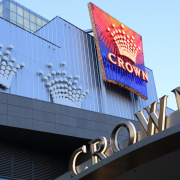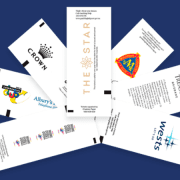NSW HAS A PLAN TO REOPEN
NSW has a plan to reopen, but will the economy bounce back this time?
The New South Wales government has now outlined its plan to reopen most sectors of the economy to vaccinated people, probably as early as mid-October.
There is a firm hope that the state’s economy will bounce back strongly from these lockdowns when the reopening arrives, along with Victoria and the ACT once they also emerge from lockdown.
But there’s a nagging question: Will the economic recovery be as good this time around as it has been after previous lockdowns?
Some economists don’t think so.
What will ‘living with COVID’ mean in reality?
They say households are not in the same financial position today as they were in 2020.
When the Jobkeeper program was introduced last year, it provided $750-a-week payments for eligible employees for six months, and then it was gradually reduced over subsequent months.
For many workers, that money provided a level of income they’d never had, or hadn’t had in years.
Thousands of households were lifted out of poverty briefly.
It allowed people to accumulate savings, many for the first time.
And with fewer opportunities to spend money at restaurants and concerts and other activities during the lockdowns, there was a degree of enforced saving occurring.
It saw the household saving ratio soar to its highest level on record (with records beginning in 1959), hitting 22 per cent last year.
It meant when the lockdowns finished, and people returned to the streets in a zero-COVID environment, there was a boom in confidence and spending.

But the key was returning to some type of normalcy in a zero-COVID environment.
With little COVID in the community, there were few health fears.
Consumer and business confidence soared when the lockdowns ended, and demand bounced back strongly.
With international borders remaining closed, employers were forced to hire from the local pool of workers.
As people surged back to work, the conditions were such that the official unemployment rate fell for eight consecutive months, hitting 4.9 per cent in June, its lowest level in a decade.
The Delta outbreak destroyed that momentum
But then the New South Wales government lost control of the Delta variant in June this year.
It forced more than half of Australia’s population back into lockdowns, and the federal government didn’t reintroduce JobKeeper.
It introduced a different wage subsidy — the COVID-19 Disaster Payment — initially at a lower rate than JobKeeper.
It had to make repeated changes to the payment through July as it realised how serious the delta outbreak was becoming.
It finally settled on a payment where, if an employee loses 20 hours or more of work, they will receive $750 a week (depending on eligibility), with smaller payments for workers who’ve lost fewer hours.
But the Disaster Payment program isn’t designed to run for a six-month period, like JobKeeper.
And the level of financial support for business is not as high this time around, either.
“The initial response was big and bold. This year, what we’ve seen is a much more conservative response,” Dr Angela Jackson, lead economist at Equity Economics, told the ABC this month.
“The overall level of support is much, much less. It’s an order of magnitude less economic support for businesses and households through these latest shutdowns across Victoria and New South Wales.”
Some economists warn this recovery will be different
This week, the Reserve Bank governor, Philip Lowe, warned the recovery from these lockdowns would likely be slower.
“There is … uncertainty about the timing and pace of this bounce-back and it is likely to be slower than that earlier in the year,” Dr Lowe said.
“Much will depend on the health situation and the easing of restrictions on activity.”
A key difference this time around is Australian households won’t be emerging from these lockdowns into a COVID-free community.
Instead, voters are being told they’ll have to learn to “live with COVID.”
Economists say it’s difficult to predict how Australians will behave when they know the delta variant is circulating in the community.
They say a lot will depend on the level of vaccination in each state, and how comfortable people feel about the virus.
“For the first time Australia will experience ‘living with COVID’,” Commonwealth Bank economist Gareth Aird wrote recently.
“New COVID‑19 cases will surge on reopening in NSW as has been the case overseas. It will simply be a matter of time before the virus is rampant across the entire country.
“This is likely to mean that there will be a significant period of adjustment for households and businesses as the virus circulates within the community in large numbers and hospitalisations rise.
“We anticipate an uneven reopening of the economy, which means it will take time for economic momentum to build again.”
Paul Bloxham, HSBC’s Australia chief economist, makes a similar argument, saying it seems unlikely Australia will see a sharp bounce-back this time around.
“Some observers might argue that other countries, for example the UK and US, have had strong bounce backs once the vaccination rates rose to higher levels and these economies could be re-opened,” he said.
“Australia may be a bit different though.
“In those countries the worst of conditions was during the earlier stages of the pandemic and the rollout of the vaccine saw much improved conditions.
“In Australia, rising vaccination rates will protect health outcomes, but overall health conditions (and therefore economic conditions) are likely to still prove to be worse, even after the vaccine has rolled out, than they were when there were zero, or near-zero cases.”
What about spending patterns?
Consumption accounts for well over half of economic activity in Australia, so it will have a huge influence on the recovery.
Some economists still believe there will be a strong bounce-back when economies finally emerge from lockdown, but they say it’s hard to predict how consumption will fair in all categories of goods and services when we’re “living with COVID”.
For one, they say some goods may not see a surge in demand, given the amount of over-spending that has already occurred on them.
Tapas Strickland, director of economics at NAB, said three categories of goods had seen a large divergence from pre-pandemic trends in the last year: “alcoholic beverages”, “furnishings and household equipment”, and “purchase of vehicles”.
“Each of these categories is running 0.3 to 0.6 quarters ahead of pre-pandemic trends and indicative of a degree of pull forward of consumption,” he wrote this week.
“We would expect some reversal of these gains.”

He said there were some categories of goods that had seen significant underspending recently, such as “clothing and footwear”, that would probably get a boost when people started to interact in person again.
However, on the services side of the economy, he said many categories may not see a surge in spending, given the nature of the produce being sold.
“On the services side, the largest underspending relative to pre-pandemic is in ‘transport services’, ‘hotels cafes and restaurants’, ‘recreation and culture’, and health,” he said.
“The implications of this underspending though are less clear given the adage ‘you can’t consume more than one haircut at a time’.
“So while some sectors may see a concentration of pent-up demand, such as for holiday and recreation as lockdowns ease and as border restrictions start to ease, others are more likely to revert to previous levels with little sustained overshoot.”
Mr Strickland said Australia’s transition to starting to live with the virus was key to all these trends.
“Particularly regarding services,” he said.
Households will run down their savings
Carlos Cacho, the chief economist at Jarden, said he still thinks the conditions are right for the economy to bounce-back strongly when lockdowns end.
However, he said the level of fiscal stimulus in these lockdowns is “an order of magnitude smaller than during the initial 2020 lockdown,” and households will rely on their large savings buffer to support spending.
“We estimate that total fiscal stimulus over August was worth $6.5 billion, compared to an average of $27 billion a month over the second half of 2020,” he wrote this week.

“This is important because it means the rebound in activity could be more modest, and there is likely to be limited support for business profits from fiscal stimulus.
“That said, there are still significant buffers built up over 2020 which should help to offset this, with household and business cash deposits $61 billion and $96 billion above their pre-COVID run rates.
“Importantly, we still see consumer spending being largely driven by the rundown in savings rates, in the face of only modest disposable income growth ahead.”













